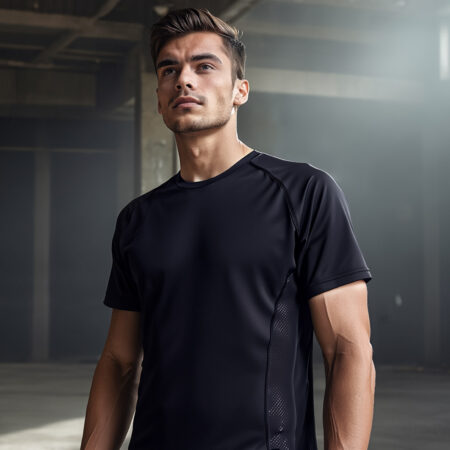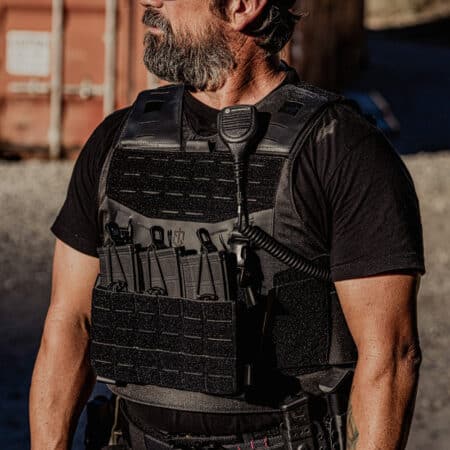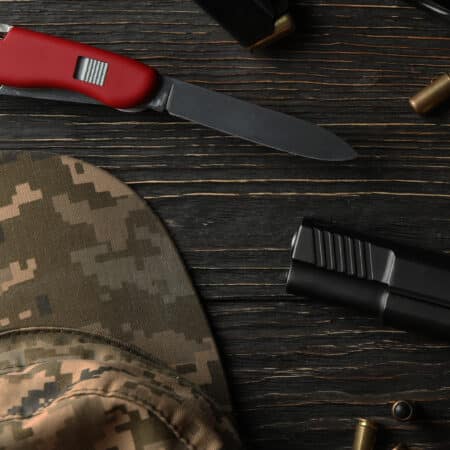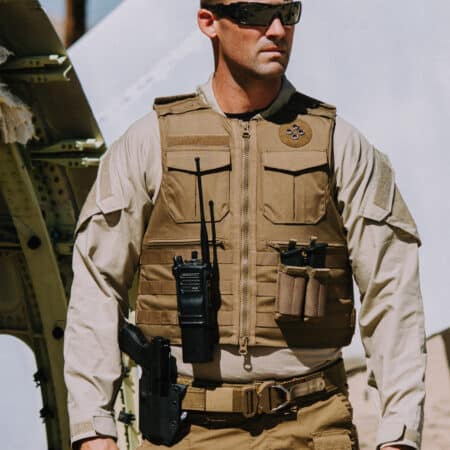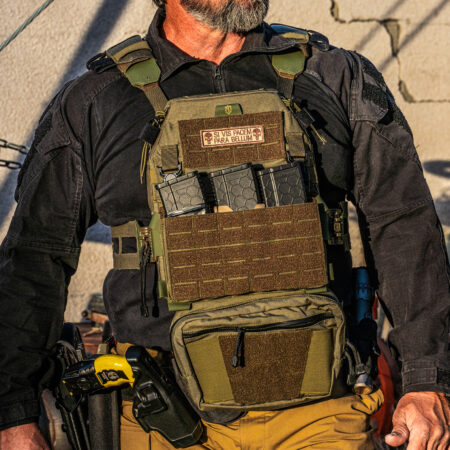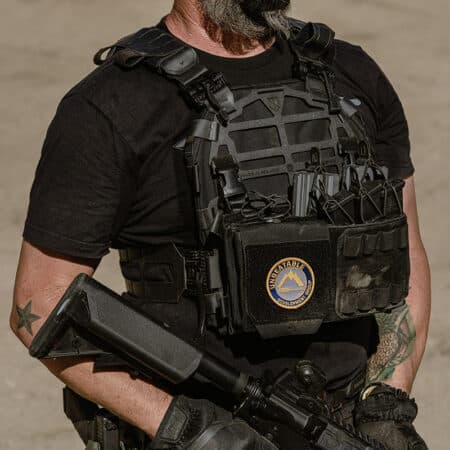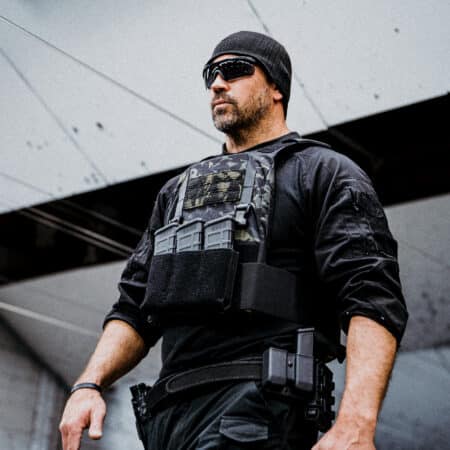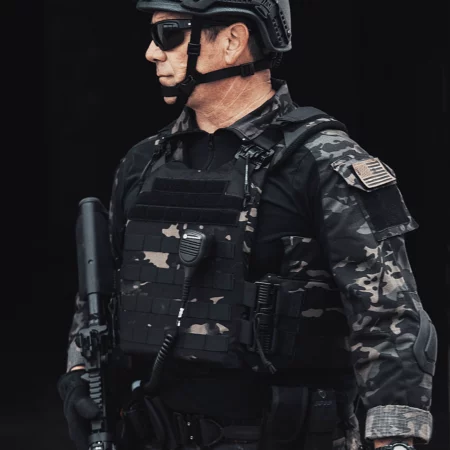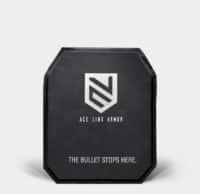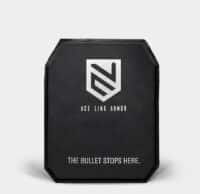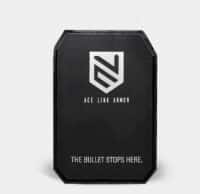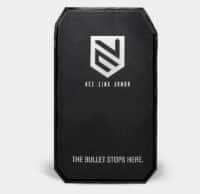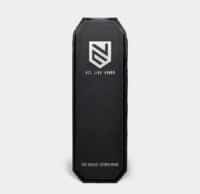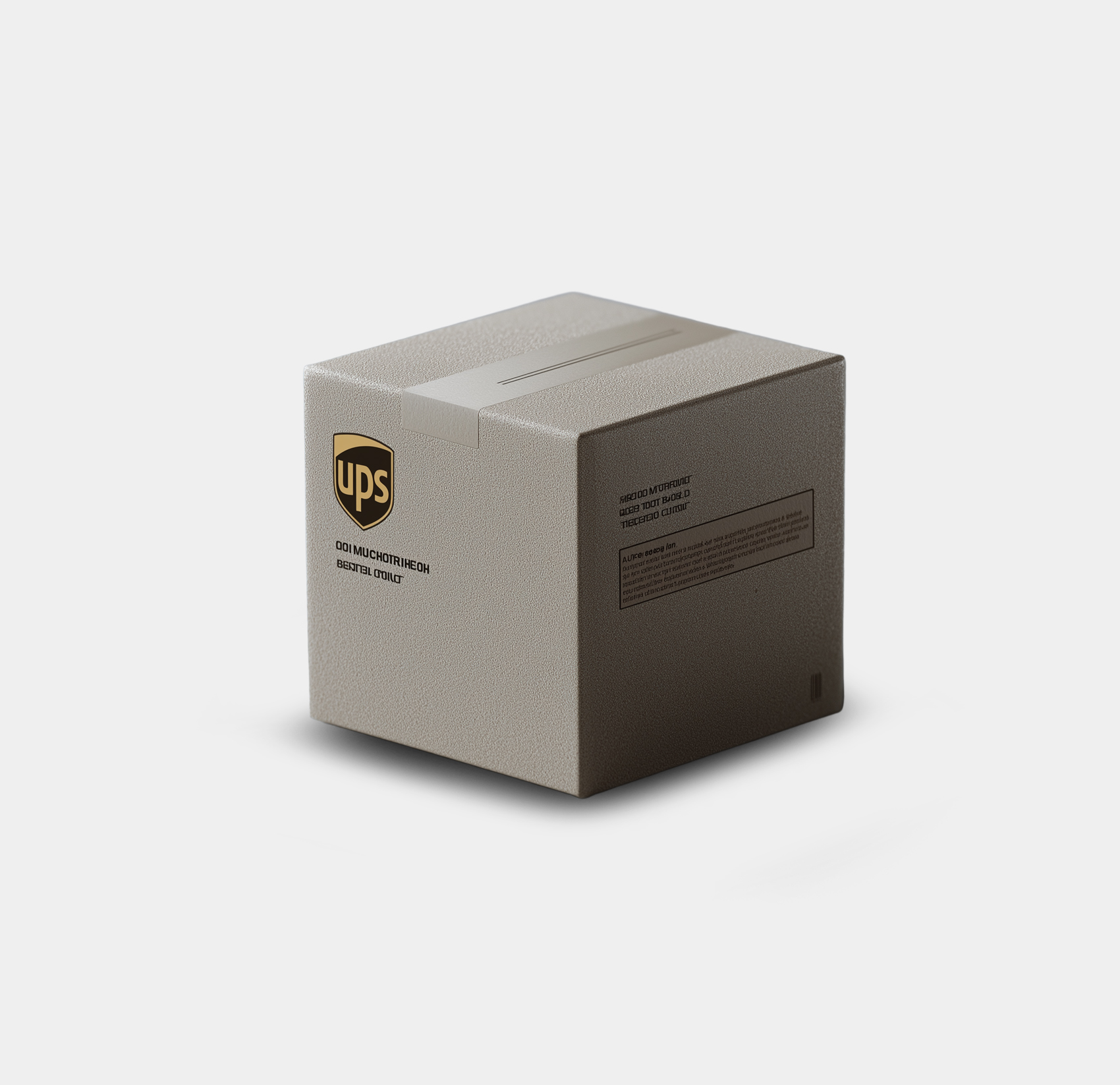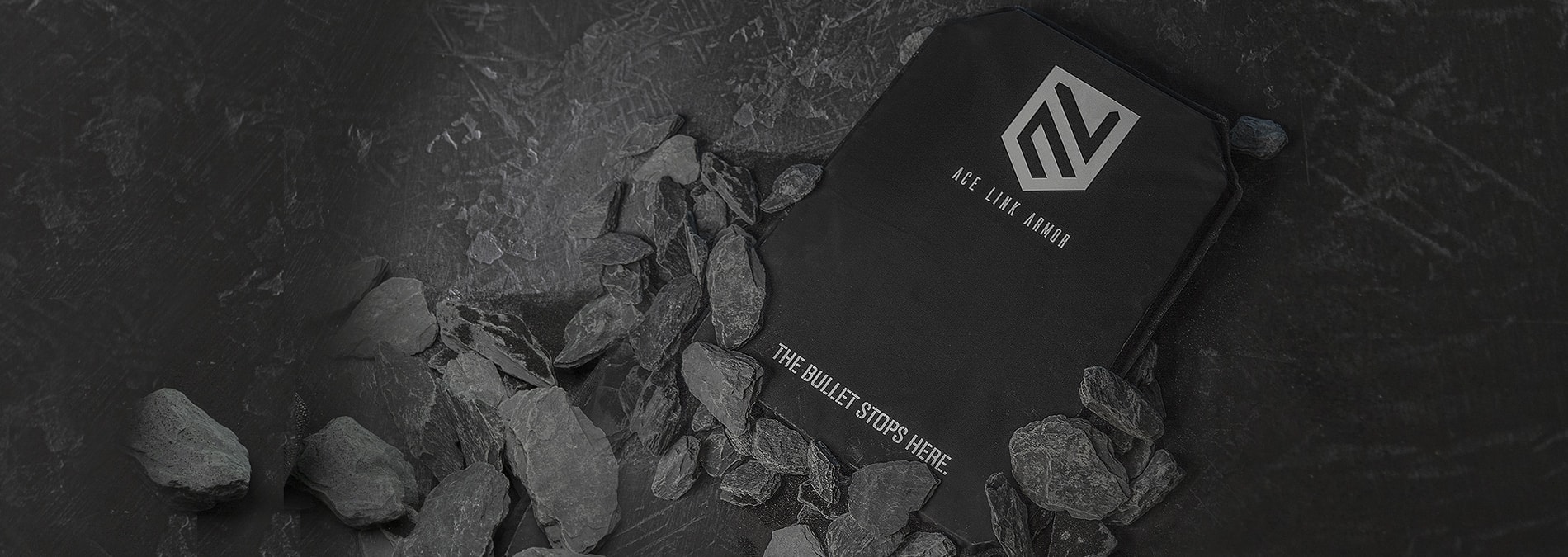
Soft Armor IIIA Stab
Dual-Threat Body Armor Inserts

Level of protection
Price
Sort by
Stabproof vest and stab-proof inserts.
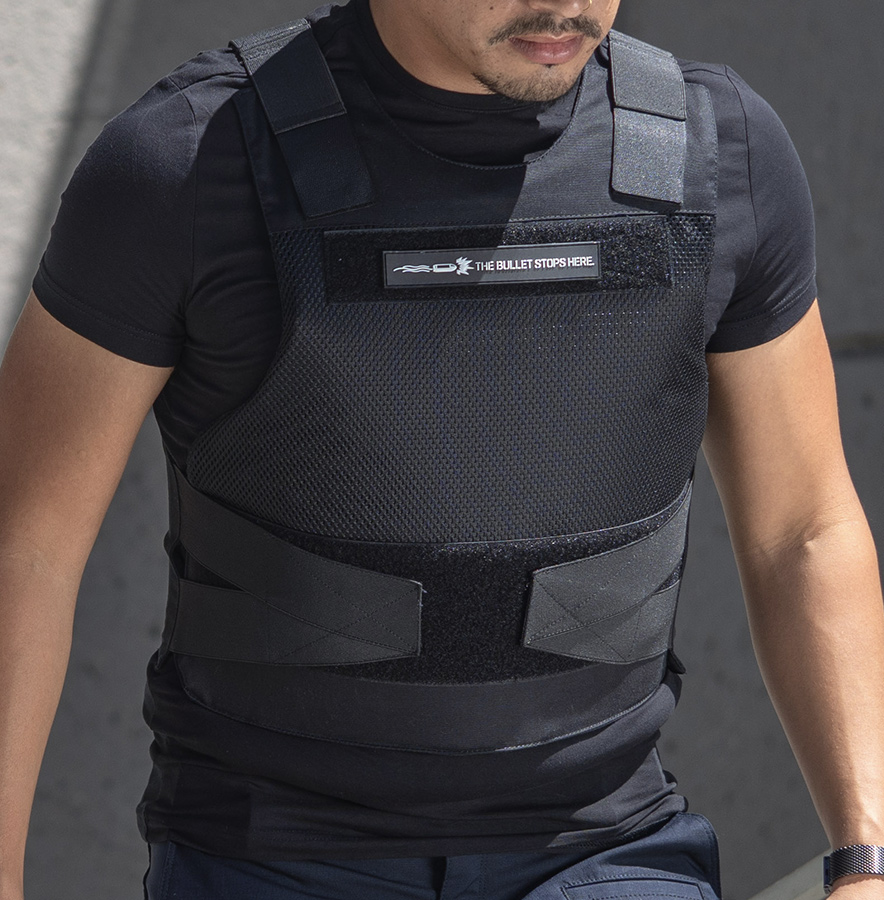
Stabproof vest and stab-proof inserts
Though bulletproof vests are designed to offer protection against ballistic threats, they don’t have the ability to resist knife attacks as efficiently. This is why we have stab-resistant body armor, that is designed specifically to deal with knife and spike attacks.
Though bulletproof vests are much more common in the US, since officers are much more likely to be shot than stabbed, there are also certain situations where stab-resistant body armor is much more effective. Stab-resistant armor is used by police officers in many countries including the UK, and in the United States, it is used by correctional officers in prisons, where they are much more likely to be attacked by an improvised spike weapon rather than a gun.
Most people don’t know much about stab vests, so in this post, we are going to tell you everything you need to know about them.
Do stab-proof vests work?
Yes, Stab-proof vests are designed to stop a wide variety of edged and spiked weapons. They are tested with knives and spikes at different levels of power and are rated accordingly. Stab-proof vests are made from Aramid fibers, which are super strong and durable synthetic fibers, which are said to be stronger than steel.
To make a stab-resistant vest, these fibers are tightly woven together, and stacked on top of each other in a tightly interwoven pattern. Therefore, when a weapon tries to penetrate the vest, the fibers catch the blade and don’t allow it to pass through.
However, it is important to know that not every stab-proof vest offers the same level of protection. Stab vests come in three different protection levels, that are determined by the NIJ Standard–0115.00.
Level I stab-resistant body armor offers the lowest level of protection. It can stop knife and spike attacks that have 24 to 36 Joules of energy. A Level II stab Proof vest can stop attacks that have 33 to 50 joules of energy, and lastly, Level III stab armor can stop the strongest attacks which have 43 to 65 Joules of energy.
Do stab vests expire?
Yes, bulletproof vests and stab-resistant vests do have an expiry date. Both use Aramid fibers, which can start to deteriorate over time, and lose some of their strength as they are exposed to high heat, humidity, and regular wear and tear. Moreover, when you wear body armor, it can get creased, and worn out over time, which affects the integrity of the Aramid fibers.
Typically, most stab-proof vests have a shelf life of about 5 years, after which they can’t perform at their maximum efficiency. They may still work, but won’t offer the same level of stab protection as a new stab-resistant vest.
Can a stabproof vest stop a bullet?
Stab-proof vests are designed and tested only to stop knife and spike attacks, and they aren’t tested with bullets. Officially they aren’t rated to stop bullets, and they shouldn’t ever be used as a bulletproof vest.
Though a stab vest may stop a small bullet like a 22 caliber, it can’t be expected to reliably stop more common, and deadlier rounds. Moreover, the fibers in a stab-proof vest are arranged differently, which allows fewer layers of Aramid to stop a knife, but they aren’t enough to stop a bullet.
Does bulletproof mean stabproof?
No, Bulletproof vests are different from stab-proof vests, and though a bullet proof vest might stop some knife attacks, they aren’t designed to stop a knife, especially spike attacks from a determined and strong attacker.
So, through a bullet proof vest may offer some level of stab protection, it can be relied on to reliably protect from knife and spike attacks.
Can a knife penetrate a bulletproof vest?
Bulletproof vests are designed to offer ballistic protection to the person wearing body armor, however, stopping sharp-tipped objects and prohibiting knife penetration is a slightly different ball game. A knife can penetrate a bulletproof vest, but it does depend on the kind of knife and the force it is used with. However, stabbing through a bulletproof vest, especially higher protection levels like Level IIIA, which has a lot of Aramid layers, can be quite difficult.
Spikes are a much more serious threat for bulletproof vests, as they are less likely to get caught in the Aramid fibers, because of their sharp tip, and very small surface area. This allows the spike to push through the aramid fibers instead of penetrating them.
What materials are stab-proof?
First off, it is important to understand that no stab-proof vest is completely stab-proof. This is why some people call them stab-resistant vests as well. There are multiple materials that can be stab-resistant, however, the most commonly used material is aramid. These synthetic fibers are super strong, and when they are tightly woven together and stacked, they become exponentially stronger. Aramid and other fibers are the most common stab-proof material in the market right now.
Do police wear stab vests?
In the United States, police officers don’t wear a stab-proof vest. Instead, they usually wear ballistic body armor, since they are much more likely to be shot than to be stabbed. However, in the United Kingdom, and some European Union countries, on-duty police officers wear stab vests, since knife attacks are much more common.
Even in the United States, correctional officers, who work inside prisons are more likely to wear a stab-proof vest rather than ballistic protection vests. Since there aren’t any guns inside prisons that inmates can access, stabbing attacks with an edged blade or an improvised spike are much more common. Most stab vests are designed to stop stabbing attacks and blunt trauma attacks with blunt objects. Therefore, they can protect correctional officers from serious injuries.
In some situations, customs officers, transit officers, and immigration officers may also use stab vests, since they work in controlled environments where guns are not easy to get, however, improvised stabbing weapons are a more likely threat.
Is there a bullet and stab-proof vest?
Yes, you can get dual protection body armor, which is designed to work as both a stab-proof vest and a bullet proof vest. These vests are made from Aramid and might be slightly bulkier than an ordinary stab-proof vest. AceLink armor offers multiple dual protection body armor inserts that can be used in any tactical vest. Their level IIIA dual protection vest also offers protection against blade and spike attacks with up to 36 joules of force.
Is Level 4 body armor stabproof?
Level 4 body armor is the highest level of ballistic protection available on the market. Unlike bulletproof vests, level 4 body armor is hard, and it comes in the form of thick ceramic and steel plates. Therefore, these thick plates can definitely stop a stab or spike attack from a knife, however, it would damage the plate’s ceramic strike face, and decrease its ballistic protection capabilities.
Moreover, though a level 4 plate may be able to stop a knife, it isn’t an alternative to a stab vest. An armor plate only covers a limited part of your chest and back, and it leaves a significant part of your abdomen, and your sides exposed. A stab vest is made from soft armor, with contorts to the body, and covers more area, and hence offers better protection. Moreover, level 4 body armor is significantly heavier than soft body armor.


